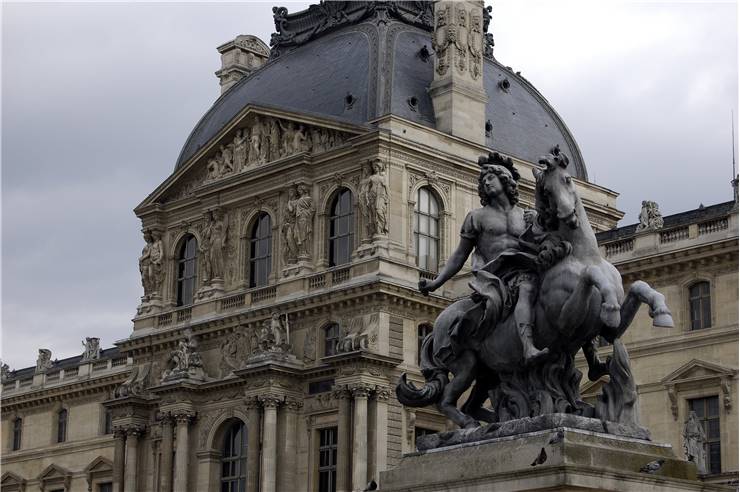History of Museums
Museum is a place and an institution that collects, takes care and interprets objects, artifacts, and other material evidence of human history, as well as of nature, and makes them available for viewing by the general public. The word “museum” comes from the Ancient Greek “mouseion,” which meant “seat of Muses,” and it was used as a philosophical institution or a place for contemplation. In Rome, the Latin word “museum” was used for places for philosophical discussions. The first time the word “museum” was used to describe something similar to a modern museum was in the 15th century for the collection of Lorenzo de Medici in Florence. Until the 17th century, it was a name for curiosities such as Ole Worm's collection in Copenhagen and John Tradescant's collection in Lambeth. When John Tradescant's collection became the property of Elias Ashmole in 1677, it was moved to the University of Oxford to a building specially built for it. The building was opened to the public in 1683 and was named the Ashmolean Museum and is considered the first museum open to the public that held the name “museum”. That marks the moment when “museum” started being an institution and not just a collection of items, and it remained like that during the 19th and 20th centuries.
In time some other forms of museums began to appear as they began to accommodate different types of artifacts. There are now open-air museums that have preserved buildings as objects, ecomuseums, and even virtual museums that exist only in electronic form on the Internet. There are also archeology museums that hold archaeological artifacts; art museums (or art galleries) that display different forms of art; encyclopedic museums that give much different information about local and global history; history museums; maritime, military, and war museums; pop-up museums that are temporary and many more.

History of Museums
Museums deal with nature and human influence on nature and how humans have changed through history. But museums also change through history. How? You can read about museum history here.
Facts about Museums
As many museums started from the same point, collections of curiosities changed over time, focused on different themes and cultures, and had other goals. You can read more about interesting museum facts.
Popular Museums
Many museums in the world differ in size, specialization, and collections. Many of them are very popular with tourists. Here you can find more about famous museums.

The earliest museums were private collections that were not open and were only accessible to a narrow circle of people. They displayed rare and curious natural objects and artifacts. Some worked as “wonder rooms” or “cabinets of curiosities.” The oldest known museum was Ennigaldi-Nanna's museum, collected by Princess Ennigaldi and dated from 530 BC. It was located in the state of Ur, and it held Mesopotamian antiquities. It was visited enough to have clay labels in three languages. Museums opened to the public in the Renaissance, but many important museums started opening in the 18th century.
The oldest public collection of art is Capitoline Museum, and it started in 1471 with a donation of sculptures by Pope Sixtus IV to the people of Rome. The oldest museum in the United Kingdom, opened in 1660, is the Royal Armories in the Tower of London. The City of Basel bought a private collection of Amerbach Cabinet in 1661 and opened it to the public in 1671. From it developed Kunstmuseum Basel. St. Petersburg’s first museum was opened in 1717 and named Kunstkamera. The private collection of Sir Hans Sloane was a basis for British Museum in London, founded in 1753 and opened to the public in 1759. Catherine the Great founded Hermitage Museum in 1764 and opened for public viewing in 1852.
Featured Articles
The First Public Museums
Early museums, the precursors to modern institutions, served as important centers for preserving, studying, and displaying art, natural history, and cultural artifacts, paving the way for today's diverse and engaging museum experiences.
History of Open-air Museums
Open-air museums offer visitors an immersive experience, transporting them through time and space as they explore historic structures, artifacts, and cultural landscapes in a natural outdoor setting.
Interesting Facts about Museums
Discover a world of fascinating insights as we explore intriguing museum facts that reveal the hidden stories and unique features behind these cultural institutions.
Types of Museums
Museums come in various types, each displaying a different theme or subject, such as art, history, science, or culture, providing visitors with diverse and enriching experiences.
List of Famous Museums in the World
While there is no definitive set of criteria for making a museum popular, some key factors contribute to a museum's appeal and success, such as: offering unique and engaging exhibits, providing educational value, having a well-designed layout, organizing special events and rotating exhibitions, maintaining a strong online presence, offering diverse educational programs, being strategically located, and receiving positive word-of-mouth and media coverage. Here you can find more about the world's most famous museums.

